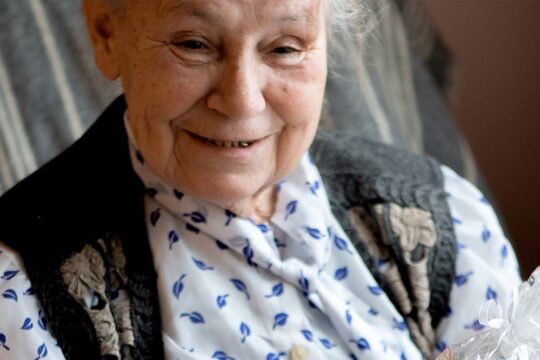
How Do You Help Elderly With Toileting?
Toileting Assistance for Elderly & Seniors
The bathroom is a dangerous place for seniors as wet floors and other obstacles can lead to a fall. Additionally, poor vision and insufficient lighting can cause seniors to fall. Beyond the increased chances of falling, seniors face other hindrances in the bathroom as well, such as dropping blood pressure, lightheadedness, dizziness, and fainting.
All of these factors make it critical for seniors to receive assistance when using the restroom. Family members not trained to physically support a senior may injure themselves. Even if your elderly relative is fairly self-sufficient, they may require assistance when using the restroom, which means you need to know how to help them. Learn how to help your senior parent on the toilet here.
How do you help an elderly person toilet?
The best way to help an elderly person on the toilet requires you to ensure them it’s not embarrassing and does not make them less in control of themselves. Next, encourage them to move as much as possible on their own to reduce the possibility of injury for both of you. You are mostly there to help with balance.
Never directly lift your senior or ask them to pull on you to get on or off the toilet, as this could injure both of you. Instead, keep them stable by gently grabbing their trunk and hips. Pulling their arms or legs may injure fragile extremities or throw them off-balance and cause injury. Always bend your knees to avoid injuring your back when assisting them in lowering or raising themselves.
Also, use short sentences to explain the next step before moving so your elderly loved one knows what to expect. Give them plenty of time to complete your request. For example, say, “I am going to help you stand up now, so squat down slowly. Move your bum forward. When you are ready, lean forward and place your hands on my forearms. Then lower yourself down on to the seat.”
Both before and after, follow your elderly parent at their own pace to and from the bathroom. Remain close by and ready in case they wobble or trip. When they are close to the toilet, instruct them to take small steps to turn around until the toilet is directly behind them. On the way out, watch them walk to ensure they do not slip on the bathmat or some other item.
What helps dementia patients with toileting?
Help dementia patients to use the toilet by making the process as easy as possible to get on and off. For instance, install a raised toilet seat and grab bars.
Take note of any signs that the person needs to use the restroom, such as agitation, fidgeting, clothing tugging, wandering, or touching the genital area.
In addition, establish a routine and take the person to the bathroom on a regular basis, such as every two hours. If someone indicates that they need to use the restroom, you may need to act quickly. Some people follow a routine, particularly when it comes to bowel movements. If this is the case, remind the person to use the restroom at the usual time, such as right after lunch.
If the care receiver requires assistance in removing clothing, move slowly and encourage him or her to assist. Remind the person that they must pull their pants down before sitting. Opt for clothes with an elastic waist to simplify the process. Allow enough time for the person to empty their bowel and bladder, as it might take some time to get started. Leave and return in a few minutes, or stand just outside the door.
Give the person toilet paper to use as needed. You may need to assist the individual in getting started. If you need to wipe for them, wipes can be more convenient than toilet paper. Assist in pulling pants back up as needed, as they may skip this step and cause a falling hazard. If the person needs to use the restroom at night, provide a night light.
Using incontinence pads in underwear can help reassure someone that they do not have to rush or panic when they need to urinate. Unnecessary clutter on the floor should go, such as trash cans, decorations, etc. All obstacles can lead to falls or a hazard to an elderly parent with dementia.
How often should you toilet an elderly person?
Each individual will have a different need and urgency for the toilet. For instance, older women may need to urinate more frequently, while older men may not need the toilet as often. Suggest using the restroom on a regular, scheduled basis, as rushing after the urge increases the likelihood of an accident. For most people, every 2 hours is too frequent, while for others, they can go every 3-4 hours.
While decreased urine output in the elderly may appear to be unimportant, it is almost always necessary to seek medical attention to help identify the cause. If left untreated, decreased urine output in the elderly can lead to complications such as anemia, hypertension, heart failure, and other issues. The good news is that dehydration is the most common cause of decreased urine output in elderly patients, which is usually simple to treat and avoid in the future.
What could be used if a person is unable to walk to the toilet?
Someone who is unable to walk to the toilet has few options available for relieving themselves. The options range from wheelchair use to the use of a portable toilet for the elderly. Some options include a commode, a portable indoor toilet, or a bedpan. A commode is a portable toilet chair-like apparatus with a built-in toilet seat and a pan underneath that allows you to use the toilet in any room of your home. Elderly who are completely bedridden, a bedpan or portable urinal may be the most useful aid with options for both men and women.
How can I encourage toileting with elderly?
Going to the bathroom is a personal, private experience, so assisting a friend or family member to use the toilet can be embarrassing for both of you. Some seniors may be embarrassed to appear so vulnerable in front of a loved one, and you may find it difficult to see the person who raised you in this state. Overcoming the embarrassment, on the other hand, can lead to positive outcomes.
If Dad has difficulty using the bathroom, it may be possible to remodel his bathroom to make it easier to use. Installing grab bars could help him get on and off the toilet, and nonslip decals are simple to apply to tubs and tiles to reduce the risk of slipping. In general, making sure that everything is within his reach and that there are few obstacles will be a great place to start. However, even a remodel may not be enough to allow every senior to use the bathroom alone; some will require assistance.
How do you help a bedridden person pee?
Help a bedridden person to pee by gathering your supplies. You will need a warm water basin, disposable gloves, toilet paper, wet wipes, and dry towels. Start by ensuring the bedpan is not so cold it causes an uncomfortable shock. With one hand, support the person’s lower back.
Place the curved edge of the bedpan under the person’s buttocks with your other hand. Raise the head of the bed until the individual is sitting. Sitting upright facilitates bowel movements and urination. If possible, give the person privacy. However, if the person is frail, do not abandon them. When the person is finished, lower the bed’s head.
Ask them to raise their but if possible. With one hand, support the person’s lower back. With your other hand, carefully remove the bedpan. Place the bedpan on a chair and cover it with a towel. Now, gently roll the person onto his or her side. Wipe them clean, and then use a little warm water to wash the area. Dry them with a towel and replace their clothes or bed covers.
Examine the skin for any redness or sores regularly. Inform your healthcare provider if you notice any redness or sores, as these could be a symptom of a larger problem. Apply the medication to the sores as directed. Also, consider using adult diapers for those with limited communication options.
Remember safety first for caregivers
Caregivers who attempt to physically support a senior’s weight during bathroom trips risk injuring themselves. Elderly people may attempt to pull down on their caregivers, putting them both at risk of injury. Instead of bending at the waist, bend at the knees to help lift them. Remember to give them clear communication so they understand the decisions you are making.
Many elderly people are too embarrassed to ask family members for help using the restroom. If you or someone else in your home cannot provide the necessary care for your elderly parent, consider Stellar Care for assisted living, memory care, dementia care, and respite care. We can help you give your parents the best care possible. Call us today at (619) 287-2920!
Related Articles
Sundowning in dementia refers to a state of increased confusion, agitation, and restlessness that occurs in the late afternoon and evening.
Graduating from hospice means that a patient who was previously enrolled in hospice care has improved to the extent that they no longer meet the criteria for hospice services.
Nausea is a common yet concerning symptom among elderly individuals, often signaling underlying health issues that require attention. As people age, they experience various physiological changes and are more likely to develop chronic health conditions, which can contribute to feeling nauseated.
Persistent fatigue in older adults is not a normal part of aging; it often indicates a deeper problem. Recognizing the signs of fatigue in the elderly and understanding the various causes help to manage this condition and improve the quality of life for older adults.
Our Services
Memory Care
Club Stellar
Dining
Activities

A Memory Care Community
4518 54th Street • San Diego, CA 92115
Phone: (619) 287-2920
LICENSE #374603625
Copyright © Stellar Care | Website Development by blue media marketing, Inc.




